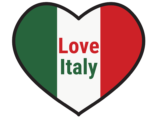
The best way to pay for things in Italy is typically through cash or credit cards. Cash is widely accepted and often preferred, especially in smaller towns and for smaller purchases. However, credit cards are also commonly used, particularly Visa and Mastercard. It’s important to notify your bank before traveling to avoid any foreign transaction issues. ATMs, known as Bancomats, are widely available for cash withdrawals. Some places may also accept traveler’s checks, but they are less common.
Exploring the Most Efficient Payment Methods in Italy: A Comprehensive Guide
Italy, a country renowned for its rich history, exquisite cuisine, and breathtaking landscapes, is a top destination for tourists worldwide. As you plan your trip to this beautiful country, one crucial aspect to consider is the most efficient payment method. Understanding the best way to pay for things in Italy can significantly enhance your travel experience, ensuring smooth transactions and avoiding unnecessary inconveniences.
Traditionally, Italy has been a cash-based society, with many small businesses, restaurants, and vendors preferring cash payments. This preference is particularly prevalent in rural areas and small towns, where credit card facilities may not be readily available. Therefore, it’s advisable to always carry some cash, especially for small purchases like coffee, gelato, or souvenirs.
However, the trend is gradually shifting towards digital payments, with credit and debit cards gaining acceptance in many establishments, particularly in urban areas and tourist hotspots. Visa and MasterCard are widely accepted, while American Express and Diners Club may not be as commonly accepted. It’s also worth noting that contactless payments are becoming increasingly popular in Italy, providing a quick and convenient payment option.
ATMs, known as Bancomats in Italy, are ubiquitous and offer a convenient way to withdraw cash. They accept most international cards, making them an excellent option for tourists. However, it’s essential to be aware of the fees associated with foreign card withdrawals. Your bank may charge a foreign transaction fee, and the Italian bank may also impose a service charge. Therefore, it’s advisable to withdraw larger amounts less frequently to minimize these costs.
Traveler’s checks, once a popular choice for tourists, have fallen out of favor in recent years. Many businesses and banks in Italy no longer accept them due to the inconvenience and high processing fees. Therefore, it’s best to avoid relying on traveler’s checks as a primary payment method.
Prepaid travel cards are another option worth considering. These cards allow you to load a specific amount of money in your preferred currency, which you can then use to make purchases or withdraw cash from ATMs. They offer the advantage of locking in exchange rates, providing protection against currency fluctuations. However, they often come with various fees, so it’s essential to read the terms and conditions carefully.
Mobile payment apps like Apple Pay and Google Pay are also gaining traction in Italy, particularly among the younger generation. However, their acceptance is not as widespread as traditional payment methods, so they should not be relied upon as the primary means of payment.
In conclusion, the best way to pay for things in Italy largely depends on your personal preferences and the nature of your trip. A combination of cash and cards is generally the most practical approach. It’s advisable to carry some cash for small purchases and use a credit or debit card for larger transactions. Always inform your bank of your travel plans to avoid any potential issues, and keep an eye on exchange rates to get the most value for your money. With the right planning and preparation, you can ensure a smooth and enjoyable travel experience in Italy.
Conclusion
The best way to pay for things in Italy is by using cash for small expenses and credit cards for larger purchases. However, it’s important to ensure your credit card is accepted in Italy and doesn’t charge foreign transaction fees.
Secure Your Dream Italian Experience Before It’s Gone!
Planning a trip to Italy? Don’t let sold-out tours or overcrowded attractions spoil your adventure. Unmissable experiences like exploring the Colosseum, gliding through Venice on a gondola, or marvelling at the Sistine Chapel often book up fast—especially during peak travel seasons.

Booking in advance guarantees your place and ensures you can fully immerse yourself in the rich culture and breathtaking scenery without stress or disappointment. You’ll also free up time to explore Italy's hidden gems and savour those authentic moments that make your trip truly special.
Make the most of your journey—start planning today and secure those must-do experiences before they’re gone!
